Bipin Chandra Summary: British Conquest of India | Old & New NCERTs for IAS Preparation (Must Read) - UPSC PDF Download
The British Conquest of India
The British conquest of India was a transformative process that unfolded over several centuries, fundamentally altering the subcontinent's political and cultural landscape. It began with the arrival of the British East India Company in the early 17th century, which initially focused on trade. Over time, the Company expanded its influence through a series of military and diplomatic maneuvers.
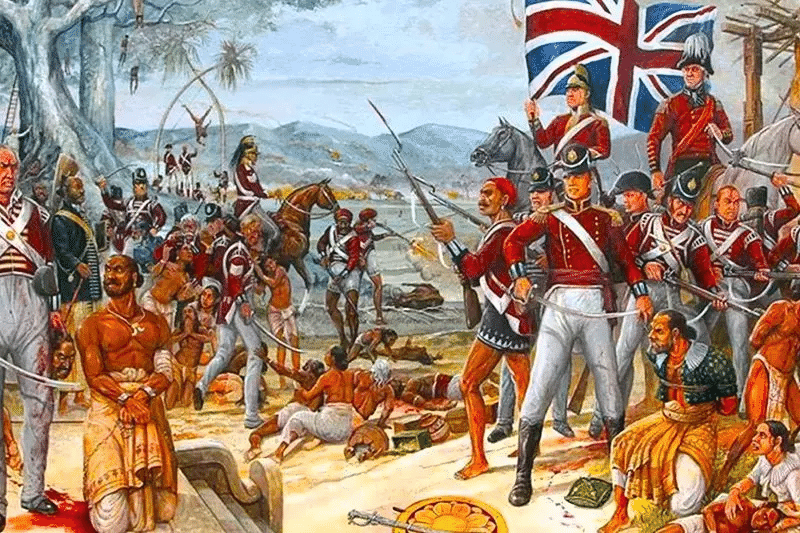 British Conquest of India
British Conquest of India
I. Expansion of the Empire, 1756-1818
British Occupation of Bengal
- The roots of British political dominance in India can be traced back to the Battle of Plassey in 1757, where the forces of the English East India Company defeated Siraj-ud-Daulah, the Nawab of Bengal. This victory marked a significant step towards British control over the Indian subcontinent.
 Siraj-ud-Daulah
Siraj-ud-Daulah
- Bengal, being the most fertile and economically prosperous province in India, attracted the attention of the East India Company. The Company had established highly profitable trading interests in Bengal, leveraging valuable privileges granted by a royal farman in 1717 by the Mughal Emperor.
- However, tensions arose between the Company and the Nawabs of Bengal due to conflicting interpretations of the farman. The Nawabs objected to the Company's tax exemptions and the misuse of passes (dastaks) for trade. Despite attempts by Nawabs like Murshid Quli Khan and Alivardi Khan to assert authority, the Company's servants continued to evade regulations.
- The situation escalated when Siraj-ud-Daulah succeeded his grandfather, Alivardi Khan, and demanded that the English adhere to the trading terms established during Murshid Quli Khan's reign. The English refusal, coupled with their fortification of Calcutta without the Nawab's permission, sparked conflict.
- Siraj-ud-Daulah perceived the English actions as a challenge to his sovereignty and ordered them to dismantle their fortifications. However, the English, emboldened by their successes elsewhere in India, refused to comply, intending to remain in Bengal on their own terms.
- Siraj-ud-Daulah, recognizing the long-term implications of English ambitions, decided to assert his authority. He seized the English factory at Kasimbazar and then captured Fort William in Calcutta in June 1756, underestimating the strength of his adversary in the process.
II. Consolidation of Power in Bengal
English Retreat and Intrigue
- Following the capture of Fort William by Siraj-ud-Daulah, English officials retreated to Fulta, where they awaited aid from Madras. During this period, they engaged in political manipulation and treachery, forming alliances with influential figures in the Nawab's court, including Mir Jafar, Mir Bakshi, and others.
- A strong naval and military force from Madras, led by Admiral Watson and Colonel Clive, arrived to support the English. Clive successfully reconquered Calcutta in 1757 and coerced the Nawab into conceding to English demands.
Battle of Plassey
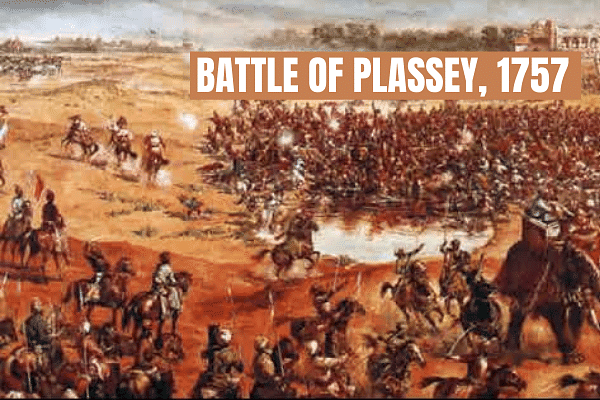
- Despite securing concessions, the English sought greater control by conspiring to replace Siraj-ud-Daulah with the more compliant Mir Jafar. This led to tensions culminating in the Battle of Plassey in 1757, where the English decisively defeated the Nawab's forces.
- The battle, although relatively small in terms of casualties, marked a turning point. Mir Jafar was installed as the Nawab of Bengal, granting the English extensive privileges including the right to free trade and acquisition of territories.
Consequences of Plassey
- The victory at Plassey had far-reaching consequences, consolidating British power in Bengal and laying the groundwork for further expansion across India.
- It significantly elevated British prestige and positioned them as major contenders for dominance in the Indian subcontinent.
- The control over Bengal provided the British with substantial revenues, enabling them to build a formidable army and assert dominance in Anglo-French conflicts.
- However, it also facilitated the exploitation of Bengal's resources and people for the benefit of the British.
III. Challenges and Rebellion
Mir Jafar's Rule
- Mir Jafar's tenure as Nawab was marked by discontent and financial strain.
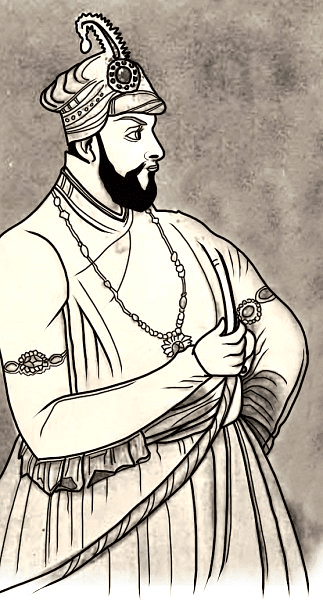 Mir Jafar
Mir Jafar
- Despite initially cooperating with the English, he soon found himself unable to meet their ever-increasing demands for bribes and gifts.
- The Company's officials, particularly Clive, exploited their position for personal gain, draining the treasury and resources of Bengal.
Rise of Mir Qasim
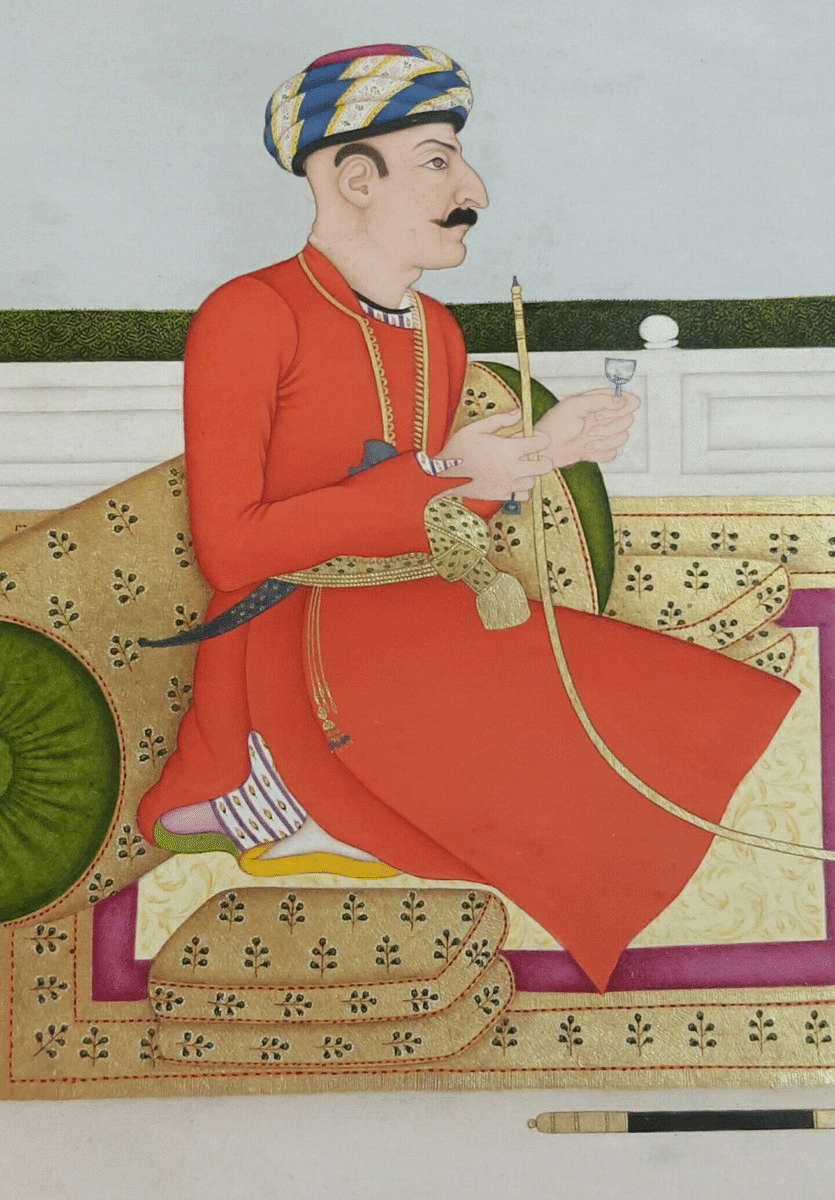 Mir Qasim
Mir Qasim
- Due to mounting pressure and dissatisfaction, Mir Jafar was forced to abdicate in favor of his son-in-law, Mir Qasim, in 1760.
- Mir Qasim attempted to assert his independence and modernize Bengal by curbing corruption, strengthening the army, and challenging the Company's exploitative practices.
- However, Mir Qasim's reforms and resistance to British dominance led to further conflicts and eventually his removal from power.
Oppression and Exploitation
- The period following Plassey was characterized by rampant exploitation and oppression by the British East India Company and its officials.
- They abused their power to extract wealth from Bengal, leading to economic decline and widespread suffering among the local population.
- Indian traders, artisans, and peasants were subjected to unfair competition, extortion, and coercion.
- The Company's pursuit of profit led to a systematic plundering of Bengal's resources and destruction of its prosperity.
Mir Qasim's Resistance
- Realizing the detrimental impact of British abuses on Bengal's strength and autonomy, Mir Qasim took bold steps to resist foreign control.
- He abolished all internal trade duties, intending to restore equality between Indian and foreign merchants.
- However, the English merchants, unwilling to accept equality, demanded the reinstatement of duties, leading to renewed conflict.
- Ultimately, Mir Qasim faced defeat in battles against the British in 1763 and sought refuge in Avadh, forming alliances with Shuja-ud-Daulah and Shah Alam II.
- Their combined forces were decisively defeated by the British at the Battle of Buxar in 1764, solidifying British mastery over Bengal and neighboring regions.
Consolidation of British Control
- Following the victory at Buxar, Robert Clive, serving as Bengal's Governor, seized the opportunity to expand British authority.
- Mir Jafar was restored as Nawab, and a new treaty signed in 1765 further strengthened Company control over Bengal.
- The treaty granted the Company supreme authority over Bengal's administration, with the right to nominate a Deputy Subahdar to govern in its interest.
- Additionally, the Company secured the Diwani, or the right to collect revenue, of Bengal, Bihar, and Orissa from the titular Mughal Emperor, Shah Alam II.
IV. Dual System of Administration
Establishment of Dual Government
- From 1765 onwards, the East India Company effectively became the ruler of Bengal.
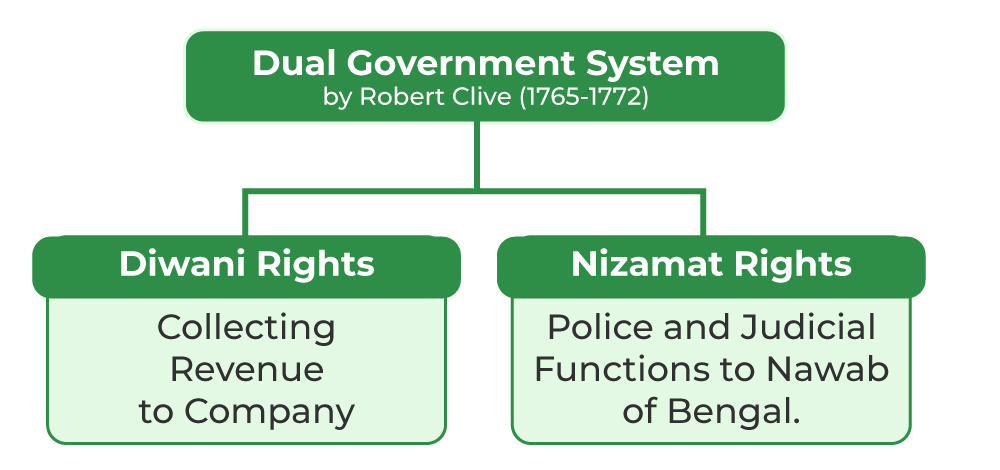
- The administration operated under a dual system, where the Company controlled both the revenue collection (Diwani) and the police and judicial powers (Nizamat) through the Deputy Subahdar.
- This arrangement allowed the British to wield power without assuming responsibility.
- While they managed finances and military affairs directly, the Nawab and his officials were tasked with administrative duties without the authority to execute them effectively.
Exploitation and Consequences
- The Dual Government system facilitated widespread exploitation of Bengal's resources and people. British officials, driven by greed, engaged in corruption, extortion, and oppression, leading to economic devastation and social unrest.
- The Company's policies, including the drain of wealth from Bengal, exacerbated the region's impoverishment. The devastating famine of 1770, exacerbated by British policies, further decimated Bengal's population and highlighted the dire consequences of British rule.
Wars Under Warren Hastings (1772-1785) and Cornwallis (1786-1793)
I. Conflict with Haidar Ali of Mysore
Alliance with Nizam of Hyderabad
- In 1766, the East India Company formed an alliance with the Nizam of Hyderabad to aid in attacking Haidar Ali of Mysore, in exchange for territorial concessions.
- However, Haidar Ali proved formidable, defeating the British and compelling them to sign a peace treaty on his terms.
Friction with Marathas
- In 1775, conflict erupted between the British and the Marathas amid power struggles within the Maratha leadership.
- British officials in Bombay intervened, supporting one faction over another.
- This intervention sparked a prolonged war with the Marathas lasting from 1775 to 1782.
II. Challenges and Successes
Challenges Faced by British
- The British found themselves facing formidable adversaries, including the united Maratha forces, Mysore under Haidar Ali, and the Nizam of Hyderabad.
- Additionally, they were embroiled in conflicts abroad, such as the American Revolutionary War.
Leadership of Warren Hastings
 Warren Hastings
Warren Hastings
- Under the leadership of Warren Hastings, the British forces in India saw a resurgence.
- Hastings employed firm resolve and military strategies to bolster British power and prestige, despite facing formidable opponents.
III. First Anglo-Maratha War and Treaty of Salbai
Peace Agreement
- The First Anglo-Maratha War ended inconclusively with the signing of the Treaty of Salbai in 1782.
- While neither side achieved outright victory, the treaty secured 20 years of peace between the British and the Marathas.
Impact and Consolidation
- The peace period allowed the British to consolidate their rule in Bengal.
- The Marathas were preoccupied with internal conflicts.
- Furthermore, the treaty facilitated British pressure on Mysore.
- The Marathas pledged assistance against Haidar Ali.
IV. Conflict with Mysore and Cornwallis' Leadership
Resumption of Hostilities
- War between the British and Mysore reignited in 1780, with Haidar Ali's continued resistance.
- Despite initial setbacks, British diplomacy and military efforts, including alliances with regional powers, enabled them to withstand Mysorean assaults.
Third Anglo-Mysore War
- Under Lord Cornwallis, the British decisively defeated Tipu Sultan of Mysore in 1792, following a series of battles.
- The conflict demonstrated the British ability to overcome formidable adversaries through diplomatic maneuvering and military strength.
Outcome
The Treaty of Seringapatam concluded the Third Anglo-Mysore War, resulting in significant territorial concessions by Tipu Sultan and solidifying British supremacy in South India.
Expansion under Lord Wellesley (1798-1805)
I. Background and Political Context
Introduction of Lord Wellesley
 Lord Wellesley
Lord Wellesley
- Lord Wellesley assumed the Governor-Generalship of India in 1798 amidst global tensions between Britain and France.
- This period marked a shift towards aggressive expansionism by the British in India.
Political Landscape in India
By 1797, major Indian powers like Mysore and the Marathas had weakened, presenting an opportunity for British expansion. The decline of these powers, coupled with British ambitions and economic interests, created favorable conditions for expansion.
II. Strategies for Expansion
Utilization of Subsidiary Alliances
- Lord Wellesley implemented the Subsidiary Alliance system to bring Indian states under British control.
- Through this system, Indian rulers were compelled to accept British military presence and pay subsidies, effectively surrendering their sovereignty to the Company.
Methods Employed
- Wellesley's expansionist agenda relied on three primary methods: Subsidiary Alliances, outright warfare, and annexation of territories previously under subjugated rulers. These methods were aimed at consolidating British power and neutralizing potential threats.
III. Subsidiary Alliances: Mechanisms and Implications
- The Subsidiary Alliance system involved coercing Indian rulers to maintain British troops within their territories and pay subsidies for their maintenance.
- Additionally, British Residents were stationed at courts to oversee administrative affairs.
- Signing a Subsidiary Alliance effectively stripped Indian states of their independence, undermining their sovereignty in external matters and internal administration.
- The system led to economic disruptions, disbandment of native armies, and increased British control over Indian affairs.
IV. Expansionist Measures and Treaties
Treaty with the Nizam of Hyderabad
- In 1798, Wellesley secured a Subsidiary Treaty with the Nizam of Hyderabad, compelling him to maintain a British force in exchange for protection against Maratha encroachments.
- Subsequent treaties resulted in territorial concessions to the Company.
Forced Alliances with Avadh and Other States
Wellesley coerced the Nawab of Avadh and other rulers into signing Subsidiary Treaties, granting the British significant control over their territories and administrations. These treaties consolidated British hegemony in India.
Conflict with Tipu Sultan of Mysore
Tipu Sultan's resistance to British dominance led to conflicts and diplomatic maneuvers. Despite Tipu's efforts to forge alliances against the British, Wellesley's policies ultimately resulted in the defeat of Mysore and the consolidation of British power in South India.
Outcome and Impact
Wellesley's expansionist policies significantly expanded British territorial control in India, weakened indigenous powers, and consolidated British dominance. The Subsidiary Alliance system proved advantageous for the British, despite its detrimental effects on Indian states and societies.
Continuation of Lord Wellesley's Expansionist Policies
I. Defeat of Tipu Sultan and Consolidation of British Power
War with Tipu Sultan
- In 1799, the British army decisively defeated Tipu Sultan in a brief yet intense conflict, preventing French assistance and ensuring British supremacy.
- Tipu's defiance and subsequent demise underscored his commitment to independence.
Consequences of Tipu's Defeat
Following Tipu's defeat, nearly half of Mysore's territories were divided between the British and their ally, the Nizam. The remainder was restored to the descendants of its original rulers, albeit under strict British control.
Elimination of French Threat
The Fourth Anglo-Mysore War effectively eradicated the French threat to British dominance in India, solidifying British hegemony in the region.
II. Expansionist Measures Against Other Indian Powers
Forced Treaties with Carnatic, Tanjore, and Surat
- In 1801, Lord Wellesley coerced the Nawab of Carnatic into ceding his kingdom to the Company in exchange for a pension.
- Similar treaties were imposed on rulers of Tanjore and Surat, expanding British territories and influence.
Focus on Marathas
- With major Indian powers subdued, attention turned towards the Marathas.
- The Maratha Confederacy, weakened by internal strife and loss of experienced leaders, became a target for British interference.
III. Subjugation of Maratha Confederacy
Offer of Subsidiary Alliances
- Repeated offers of Subsidiary Alliances were made to Maratha chiefs by Wellesley, aiming to bring them under British control.
- However, internal conflicts and lack of leadership cohesion hindered Maratha unity.
Subjugation of Peshwa and Sindhia
- After the defeat of Holkar, Peshwa Baji Rao II capitulated to British pressure and signed the Subsidiary Treaty at Bassein in 1802, marking the subjugation of Maratha power.
- British victories further consolidated control over Maratha territories.
IV. End of Wellesley's Expansionist Policies
- The East India Company's mounting debt and Britain's financial strains, coupled with the rise of Napoleon in Europe, prompted a reevaluation of expansionist policies.
- Wellesley's recall from India in 1806 signaled a shift towards consolidation rather than further conquest.
- The Treaty of Rajghat in 1806 marked the end of Wellesley's expansionist endeavors.
- Peace with Holkar and the consolidation of recent gains reflected a pragmatic approach to British rule in India.
V. Legacy of Wellesley's Policies
- Wellesley's expansionist policies solidified British dominance in India, fostering a sense of superiority among British officials and soldiers.
- The Company's ascendancy was perceived as a triumph of British power.
- While Wellesley's policies expanded British territories, they also sowed the seeds of future discontent and resistance among Indian rulers and populations.
- The legacy of British imperialism would shape India's history for centuries to come.
Expansion Under Lord Hastings
I. Maratha Resistance and British Response
Maratha Revolt
In 1817, the Marathas, led by the Peshwa, sought to regain their independence following the Second Anglo-Maratha War. The Peshwa's attack on the British Residency at Poona marked the beginning of their resistance.
British Counterattack
Lord Hastings, the Governor-General, swiftly responded to the Maratha uprising. He compelled Sindhia to accept British suzerainty and decisively defeated the armies of the Peshwa, Bhonsle, and Holkar.
II. Consequences of Maratha Defeat
- The defeat of the Marathas resulted in the dethronement of the Peshwa and the annexation of his territories.
- Other Maratha chiefs, such as Holkar and Bhonsle, were forced to accept subsidiary forces and cede large tracts of land to the British.
- To appease Maratha pride, the small kingdom of Satara was founded out of the Peshwa's lands and given to the descendant of Chatrapati Shivaji.
- However, it operated as a complete dependency of the British.
- The Rajputana states, previously dominated by the Marathas, acquiesced to British supremacy following their defeat.
- They lacked the energy to assert their independence and readily accepted British control.
III. Consolidation of British Power (1815-1857)
Completion of Conquest
Between 1818 and 1857, the British completed the conquest of the entire Indian subcontinent, excluding Punjab and Sindh. They annexed Avadh, the Central Provinces, and numerous petty states.
IV. Conquest of Sindh
- The conquest of Sindh was motivated by the Anglo-Russian rivalry and British concerns about Russian incursions into India through Afghanistan or Persia. Additionally, the commercial potential of the Sindh River attracted British interest.
- British influence in Sindh was established through treaties in 1832 and 1839, culminating in the annexation in 1843 after a brief campaign led by Sir Charles Napier. Despite previous assurances of territorial integrity, Sindh was annexed to bolster British strategic interests.
- Sir Charles Napier led the campaign to annex Sindh, despite acknowledging the lack of a legal basis for seizure. His successful conquest was driven by strategic and commercial interests, earning him significant prize money.
The Conquest of the Punjab
I. Political Instability and British Provocation
Death of Maharaja Ranjit Singh
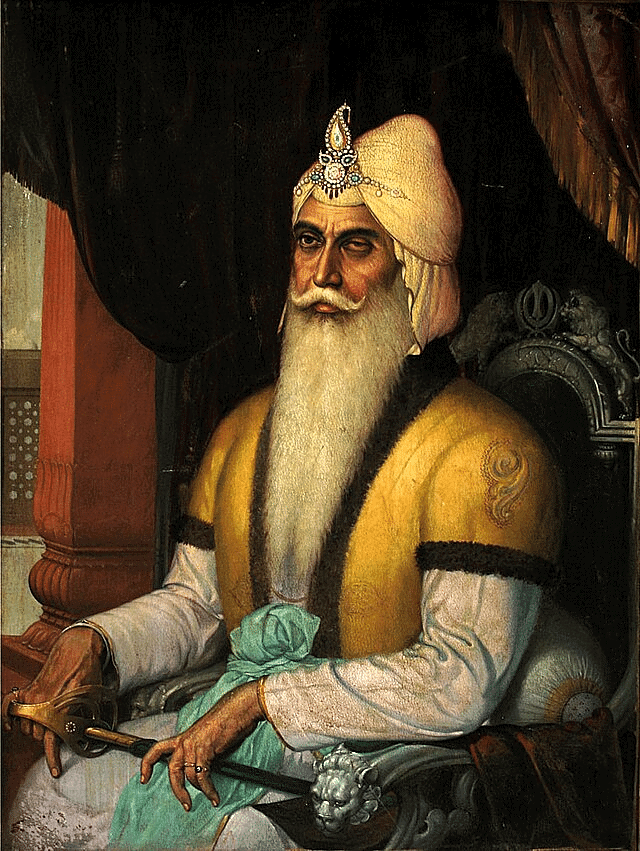 Maharaja Ranjit Singh
Maharaja Ranjit Singh
- Following the death of Maharaja Ranjit Singh in 1839, political instability plagued the Punjab, leading to rapid changes in government.
- Corrupt leaders emerged, and power eventually shifted to the indisciplined Punjab army.
British Provocation
Despite a treaty of perpetual friendship signed with Ranjit Singh in 1809, British officials eyed the Punjab across the Sutlej with greed. Provocative actions by Major Broadfoot and intrigues with corrupt Punjab chiefs fueled tensions.
II. Outbreak of War and Treaty of Lahore
Declaration of War
- Hostilities escalated in December 1845 when the Punjab army, convinced of British intentions to occupy the region, declared war after British troop movements towards Ferozepur.
- The conflict united Hindus, Muslims, and Sikhs against the British.
Defeat and Treaty
- Despite heroic resistance, the Punjab army succumbed to internal treachery and British military might, signing the humiliating Treaty of Lahore on 8 March 1846.
- The Jullundhar Doab was annexed.
- Jammu and Kashmir were handed over to Raja Gulab Singh Dogra for a cash payment.
III. British Consolidation of Power
- Subsequent treaties in December 1846 granted the British Resident at Lahore full authority over the Punjab, effectively making the Resident the de facto ruler of the region.
- The Punjab lost its independence and became a vassal state of the British Empire.
Dalhousie and the Policy of Annexation (1848-1856)
I. Lord Dalhousie's Arrival and Annexation Policy
Dalhousie's Determination
Lord Dalhousie, arriving in India as Governor-General in 1848, was committed to extending direct British rule over a large area. He believed in the superiority of British administration over that of native rulers.
Doctrine of Lapse
- Dalhousie implemented his annexation policy primarily through the Doctrine of Lapse, whereby states without natural heirs were annexed to British dominions unless adoption had prior British approval.

- Several states, including Satara, Nagpur, and Jhansi, were annexed using this doctrine.
II. Annexation of Avadh and Other Territories
Annexation of Avadh
- Dalhousie sought to annex Avadh but faced difficulties due to the region's historical allegiance to the British since the Battle of Buxar.
- He justified the annexation by alleging misgovernance by Nawab Wajid Ali Shah, citing the need for reforms.
Annexation of Berar and Other Territories
- To satisfy British demand for raw cotton and expand British exports, Dalhousie annexed Berar from the Nizam in 1853.
- He refused to recognize the titles of ex-rulers and extinguished their pensions, further consolidating British control.
III. Impact of Annexation Policy
- The policy of annexation rendered native states increasingly irrelevant, as they became integral parts of the British Empire.
- British control over these states changed according to British convenience, disregarding the interests of their populations.
|
3 videos|704 docs|515 tests
|
FAQs on Bipin Chandra Summary: British Conquest of India - Old & New NCERTs for IAS Preparation (Must Read) - UPSC
| 1. What were the key wars fought during Warren Hastings' and Cornwallis' time in India? |  |
| 2. How did Lord Wellesley contribute to the expansion of British rule in India? |  |
| 3. What was the significance of the Conquest of the Punjab in the British conquest of India? |  |
| 4. How did Lord Dalhousie's policy of annexation contribute to British expansion in India? |  |
| 5. What were the major consequences of the British conquest of India on the Indian subcontinent? |  |





















